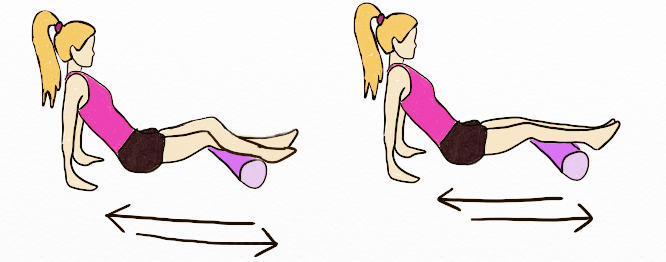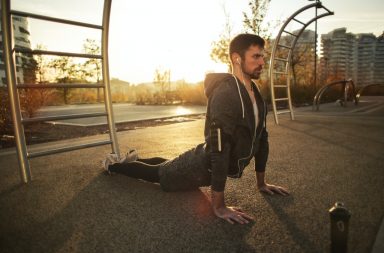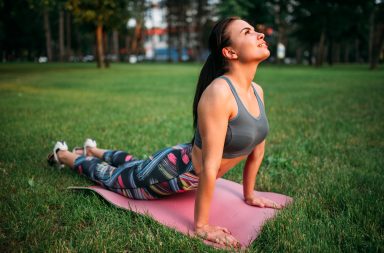Exercise is good for you. This much we know. There is, however, a bit of a blind spot when it comes to after-care. Stretching out those exerted muscles promotes optimum levels of strength, but for many, it is more a chore than the hardest of workouts.
The foam roller, however, is king, and should be treated as such. Roll out your calves and your muscles (and the rest of your body) will be eternally grateful. That said, the issue with most ‘cool-down’ exercises is they seldom seem as important as those fat-burning, toning or strengthening ones. Perhaps, this is due to the lack of outward results. But the inward benefits are incredible!
To grasp the importance of foam rolling, you must first have an understanding of what there is to gain. Because this is what fitness is all about: Gains and losses. Want to know how to do this? If so, this article offers some pro tips to roll out calves with foam roller. Once you are fully awakened to the benefits of the ‘poor man’s massage’, you will never neglect your foam roller again!
Benefits
Exercise takes a lot out of you—maybe that is why it is called a ‘workout’. Not just in terms of exertion and sweat (therefore essential water, sugars, and salt), but within the tissues of muscles, ligaments, and joints. Improper after-care of these structures can so often lead to ongoing muscular and skeletal issues.
We all know that pain in one area of your body can lead to issues in other areas, and a change in your posture generally. This happens when—in a bid to alleviate pain—muscles and joints in other areas take up the strain and over-compensate. If left unchecked this can lead to a lifetime of pain.
We know that experiencing muscle tightness and tension can affect overall mobility. So how do you combat this? You guessed it! Using a foam roller to work out muscle tension. Today we are going to focus on your calf muscles.
When using a foam roller on your calves, you begin to breakdown adhesions between the fascia and muscle tissues. The fascia is the soft tissue wrapping around the muscle. Either through injury, inactivity, or poor stretching, the muscle fibres and fascia get stuck together. This is why muscles can feel painfully tight after a workout.
It’s easy to take for granted that our legs support our entire body, so better calf strength promotes better health and less injury. With this in mind, the importance of calf strengthening exercises becomes obvious. Which makes rolling out the muscles to prevent tightness even more important.
How To Roll Out Calves With Foam Roller

How To Roll Out Calves With Foam Roller
- Place the roller under your leg, just below the knee crease. You can place both calves on the roller side by side and roll them out together. Alternatively, you can maximise the effect on one calf by crossing one leg over the other. This puts extra weight on the muscle, getting the roller deeper into those tissue and fibres.
- Place hands on the floor directly behind you, and lift up from the glutes. Maintain bent elbows as much as possible.
- Roll down the calf toward the ankle and back up toward the knee.
- Repeat a few times until you find an area of discomfort.
- Hold your position directly on top, or next to, the area of tension for 30 seconds or more. This allows you to really get into the muscle fascia and fibres underneath.
- Repeat on each tight spot as necessary.
Do this several times, rotating toward the medial and lateral muscles (inner and outer sides of the calf) to feel into the breadth of the area. In order to fully roll out your calves, you must ensure you are covering the whole muscle. Taking your time to find all those tight spots is worth it.
Pro Tips
Whilst holding on a tight spot, try oscillating your leg from side. This allows lateral movement across the calf, which will work the muscle via the foam roller all the better.
Alternatively, try flexing your ankle whilst held on a tight spot. When you switch between plantar flexion and dorsiflexion—pointing foot up/towards you and forward/away from you—the tension in your muscle is increased and relaxed. It’s just one more way to get deeper into the muscle fibres whilst turning the discomfort down a notch or two.
Improved calf mobility can also add to improved ankle mobility, and if it works this way, it can work in reverse. An additional move could be to roll a tennis ball around your ankle muscles to release any tension around the joints!
A proper posture is also a factor when rolling out your calves with a foam roller. It is important to be mindful of the weight your wrists are baring when moving forwards and backwards. Ensure you take breaks, taking pressure off your wrists while resting on your glutes. Whilst rolling your calves, shoulders should be pulling back gently, shoulder blades relaxing down toward your hips. The benefit of bent elbows cannot be overstated, as it prevents resting on the elbow joint and potentially causing damage or inflammation.
Working Foam Rolling Into Your Routine

How To Roll Out Calves With Foam Roller
Coaches, trainers, sports therapists, will all tout the benefits of rolling out calf muscles directly after a workout. This is fantastic, but its also beneficial to add an extra foam roller session into your nightly routine, to give those muscles a bit more love and allow the tension-relief to deepen as muscles relax in sleep.
The act of self-massage can also be very beneficial in sending those sleepy vibes to your brain, allowing you to drift off into an even deeper slumber!
Rolling out your calves with a foam roller can be painful, and likely to feel very uncomfortable for first-timers. The important thing is to take it slowly and breathe through the discomfort. Proper oxygen flow means better oxygenated bloody getting to the muscles after rolling them out. And when your muscles are in excellent shape, your joints and overall posture will benefit. this is especially true if you have bad knees.
Incorporating muscle rolling into your daily routine will help ease the tension in the tissues, fascia and joints, whilst also increasing blood-flow. Once you start on this road, you will see invaluable improvement in mobility and workout recovery! I hope you enjoyed reading this article. If so, feel free to share with others.


